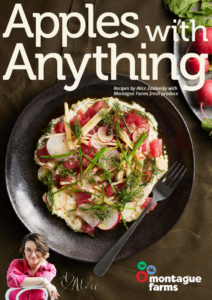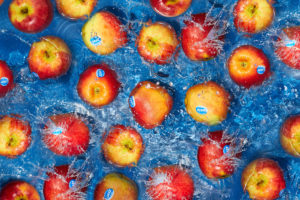Approaching stone fruit season, hundreds of hives are buzzing around Montague Farms orchards. Bees are helping growers produce the best crop they can, from apples to stonefruit.
As integral as bees are to growing fruit, these incredible creatures are also vital to the environment as a whole. Ask any grower, and they'll tell you we wouldn't have fresh, nutritious fruit without bees. Ask any environmentalist, and they'll tell you our ecosystem couldn't survive without them. In fact, without bees, 70% of plants would be unable to reproduce or grow food, and of the 100 crop species supplying 90% of the world’s food, bees pollinate 71 of them*.
Unfortunately, here at home and around the world, bee populations are declining. This is for a few reasons:
Impacts of climate change
Like many aspects of our environment, bees have suffered from climate change. This has come primarily in the form of habitat loss. For example, due to warmer weather, it's harder for bees to migrate to cooler areas and build new hives. Additionally, dangerous weather events like bushfires and floods often destroy hives.
It isn't all doom and gloom, though: following the 2019-20 Australian bushfires, after many hives were lost, communities of beekeepers and conservation organisations came together to build new hives in tree logs, hoisted higher up to prevent damage from potential future floods. Such a push, that in southern NSW, honey production increased between 60 and 100% compared to 2019^.
Bee diseases
Some parasites have the ability to harm bees. One of them is the Varroa mite, a parasitic mite that weakens bees immune system and can cause deformed wing virus. Growers can combat parasites through insecticides, though this can be tricky so as not to accidentally harm bees. In the past, the Varroa mites weren’t considered an established threat to bees in Australia. But recently, a Varroa mite outbreak has been spreading in NSW, with the Government declaring a transition from a phase of Eradication to Management, as they aim to gain control of the outbreak. There is some good news, though: to prevent food insecurity and prolong bee survival, international breeders have been researching a new bee breed that has a higher resistance to the Varroa mite*.
How can growing and consuming fruit help save bees?
Did you know bees pollinate over 130 fruits and vegetables? Through pollination, bees allow fruit to grow to their highest quality, ensuring optimal flavour, colour, shape and size. Pollination is the process in which bees collect and transfer the pollen grain from the male part of the flower, the stamen, to the female part, the stigma. This enables fertilisation to occur, allowing the flower to blossom into fruit, be it apples, plums, nectarines, you name it. For cross-pollination to occur, our growers plant specific pollinator varieties throughout the block that are known to be successful pollinators. For apples, these varieties are typically Granny Smith or crab apples. In contrast, some stone fruit and apple varieties are self-pollinators, meaning they don’t require bees to produce fruit as the tree produces pollen whilst also having the stigma.
The more fruit grown, the more bee colonies are sustained through careful habitation and monitoring. Beekeepers are able to house bees happily in hives, with the knowledge that their eco-friendly purpose is being fulfilled. So, every time you choose to snack on a JAZZ™, add envy™ into a recipe, or grill stonefruit for a summer BBQ, you're helping support a a sustainable ecosystem. Good on you!
*UN Environment Programme, 2018
^The Guardian, 2021
*Sustainable Agriculture Research and Education (SARE), 2021




